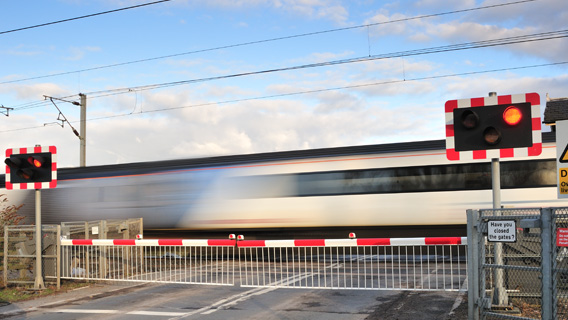Much of the work that IXC does for its clients is focused on commercially sensitive information that clients do not like publicised. However, the case study below illustrates IXC’s knowledge and expertise and how it uses its networks and industry knowledge to find fresh ideas and broker new collaborations.
Cross sector technology transfer between Road and Rail
The Knowledge Gap
The Victorian Government Department of Transport (DOT) is responsible for 2267 road and rail intersections in Victoria Australia. In 2008 Victoria had the highest number of crossing fatalities of any Australian state, and the most near misses between cars and trains. Following several major incidents there was significant public pressure on the DOT to act to improve safety across the network. The DOT asked IXC to present relevant methods, research and technologies that could provide an opportunity for new safety measures.
IXC Research
IXC research found that multiple studies, over time and in many countries, had shown that road-vehicle drivers will either completely ignore crossings, or even drive around barriers, when no train is visible. Perception of risk (recognition of the perhaps invisible approaching train and its incapacity to stop/avoid the driver on it tracks) is repeatedly negatively reinforced with years of experiences of passing across crossings without incident.
IXC Scouting
Via its network IXC was aware of a system being developed by Professor Jack Singh of La Trobe University’s Centre of Technology Infusion based on an international standard for wireless access in vehicular environments (WAVE). This dedicated mobile-phone-style wireless network, integrated with GPS was initially designed to assist emergency vehicles by warning the other traffic in their vicinity of their approach. IXC proposed that this system could be adapted to suit trains approaching level crossings and thereby warning road vehicles that not only are they approaching a crossing, but that a train is imminent.
The Impact
IXC’s facilitation of the introduction of Professor Singh’s WAVE technology to the DOT led to an AUS $4 million dollar project by the University’s Centre for Technology Infusion, in partnership with the Australian Automotive Co-operative Research Centre, the Victorian Department of Transport, Queensland University of Technology and other groups. It was expected that this new technology applied to railway crossings could save 37 lives a year, and an estimated 100 million dollars, by eliminating rail crossing collisions, especially in rural and regional Australia.
“This is a huge step towards the ultimate objective of level crossing management, not only for safety, but for “intelligent” crossings that interface with road and rail control centres to cut the amount of time level crossings are closed to the public to allow trains to pass.”
– Terry Spicer, DOT Senior Manager for Railway Crossing Safety
“…Congratulations to IXC for helping to facilitate the successful proposal that could not only result in the greatest improvement to Railway Crossing safety since the boom barrier, but has also established a level of cooperation between the Road and Rail Research industries.”
– Tom Sargent, Deputy Director, Public Transport Divsion, GM Engineering & Asset Management

